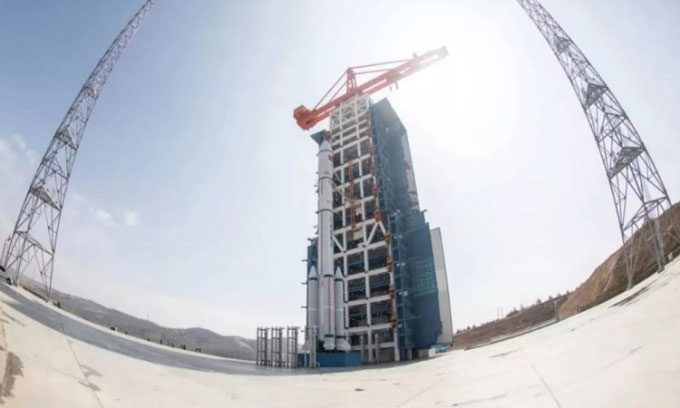The upper stage of the Long March 6A rocket shattered into hundreds of pieces in mid-November after successfully delivering a satellite into orbit.
Part of the rocket that carried the Yunhai 3 satellite last month has now become a cloud of 350 debris fragments. The Long March 6A rocket launched from Taiyuan, northern China, on November 11, successfully placing the environmental monitoring satellite Yunhai 3 into its intended orbit.

The Long March 6A rocket before the launch on November 11. (Photo: OurSpace)
However, the rocket’s upper stage broke apart shortly afterward. On November 12, the 18th Space Defense Squadron (18 SDS) of the U.S. Air Force reported that it was tracking at least 50 separate fragments from the rocket’s body. Continuous tracking data from 18 SDS shows that the debris cloud associated with the rocket’s upper stage has now increased to 350 pieces.
The disintegration of rocket stages is not uncommon. To date, the Space Debris Office of the European Space Agency in Darmstadt, Germany, has recorded over 630 instances of disintegration, explosions, collisions, or unusual events in orbit that generated debris. Collisions with space debris or micro-meteoroids can lead to even more fragments. Many spacecraft operators are taking measures to prevent such explosions, such as depleting remaining propellant in fuel tanks and removing battery packs.
Astronomer and satellite tracking expert Jonathan McDowell stated that the distribution of debris from the Long March 6A rocket indicates a significant explosion. According to him, it is possible that the propellant extraction process failed over time, leading to residual fuel triggering an explosion. The Chinese Ministry of Foreign Affairs asserted that the incident did not affect the Tiangong space station or the International Space Station (ISS).
Most of the debris from the Long March 6A rocket is located at an altitude of 800 – 1,000 km. It will take a long time for these fragments to fall back into the atmosphere. The ISS orbits at an average altitude of 420 km above Earth, while the Tiangong station is slightly lower.


















































